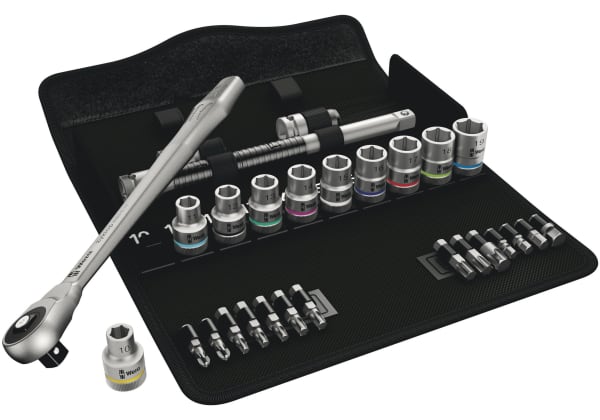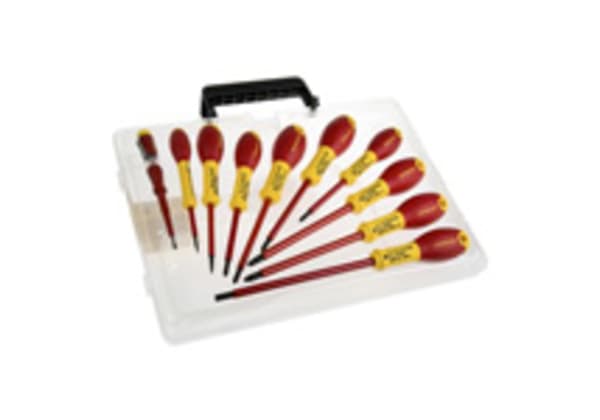- Published 1 Feb 2023
- Last Modified 29 Aug 2023
- 8 min
A Complete Guide to Socket Wrenches
Our comprehensive guide identifies key socket wrench types and explains how they work and how to use them.

Reviewed by David Carmichael, Solution Engineer (October 2021)
This introductory guide aims to explain what socket wrenches and sets are, how they work, what types are available, and how to use them properly.
By the end of our guide, you should have a clear and straightforward understanding of socket wrench types and uses, along with some answers to many common questions about buying sets and drive sets online.
What are Socket Wrenches?
Socket wrenches are widely used hand tools for easy tightening and loosening of common fasteners, typically nuts and bolts. They work in much the same way as standard spanners and wrenches, but their ratcheting design allows the user to apply torque more easily, with less strain and fatigue.
While they can be bought individually to fit various sizes of nuts and bolts, most DIY enthusiasts and professionals will opt to buy a socket wrench set. These will include numerous head fittings and adaptors, suitable for tackling a wide range of imperial or metric drive sizes and shapes.
Socket wrenches are incredibly versatile and handy tools. As such, you will find them in the tool bags of almost all mechanics, carpenters, electricians, and numerous other sorts of tradespeople.
What are Sockets & Socket Sets?
Socket wrenches - whether sold individually, as socket sets and wrench sets, or all bundled together in a combined kit - are used for the same jobs as any regular spanner set. In other words, they are designed to make fastening and unfastening various sizes of nuts and bolts easier.
Where socket wrenches differ from standard spanners is that they have an inbuilt ratcheting mechanism. A ratcheting design means that the wrench head locks in place to provide torque when pushed in one direction but can be rotated freely when pulled in the reverse direction.
This simple ratchet tool mechanism allows the user to keep applying more torque to a nut or bolt, without having to lift and reposition the wrench after each rotation. This makes it much quicker and easier to completely tighten or loosen a given fastener, and greatly reduces strain on the user’s hands and wrists. It can also make it far more convenient to work in tight spaces, such as under cupboards or behind radiators and other fixtures.
The socket wrench is the simple handled tool with an inbuilt ratcheting mechanism, usually featuring a head design that allows for various sizes and shapes of socket to be added to one end. The sockets themselves are the differently sized drives that can be attached to the handle, ready to slip over and drive the various types of nuts and bolts you will be dealing with.
Socket sets typically feature an assortment of different drive shapes and sizes, designed to be swapped around on a wrench tool. The best socket sets will include a full range of standard drive shapes and sizes (both imperial and metric), with multiple pieces made to fit over any standard nut and bolt types. As such, buying a good quality wrench and socket set means you’ll rarely encounter a rotary fastener you cannot adjust.
Different Types of Socket Wrenches
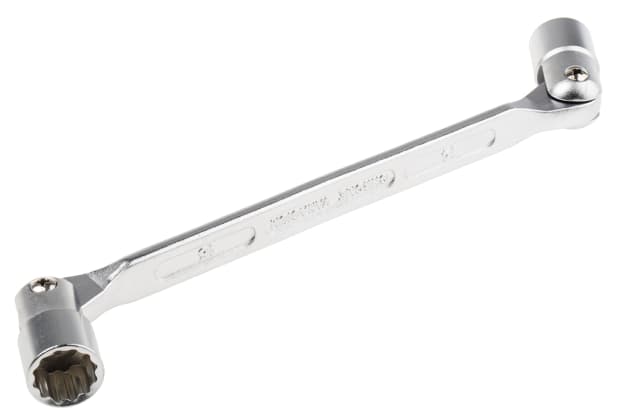
There are numerous different types available, often varying in terms of feature sets according to tool cost and brand quality. Most will share the same basic components, however - namely a solid handled torque wrench with a built-in ratchet socket mechanism.
Most will also include a mechanical switch of some sort, enabling you to reverse the direction of the ratcheting mechanism and thus apply torque either clockwise or anticlockwise.
When buyers ask, ‘what is a ratchet wrench?’, they usually want to know about the various types and brands of ratchets on sale, and the sorts of extra features they may or may not need. Higher quality ratchet tools will often be described in terms of these additional benefits and features, for example, adjustable socket wrench or quick release socket wrench.
Various adapters are also widely sold - either separately, or in multi-part kits - to give added functionality to the basic handled tool.
Drive Shape
Drive sockets tend to come in assorted standard shapes, for tackling a wide variety of different nut and bolt configurations. Common options that you may want to look out for when choosing a hex socket wrench, for example, include double hex socket sets and square socket wrenches.
Hex drive and square drive are by far the most common drive shapes you will encounter and owning a few of each socket shape should allow you to tackle almost all standard fastener types in everyday jobs.
Some models of socket wrench are sold with included extenders, allowing you to more easily reach recessed fasteners. More basic models of the tool may require you to purchase these accessories separately, often as part of a complete socket drive set.
How Does a Socket Wrench Work?
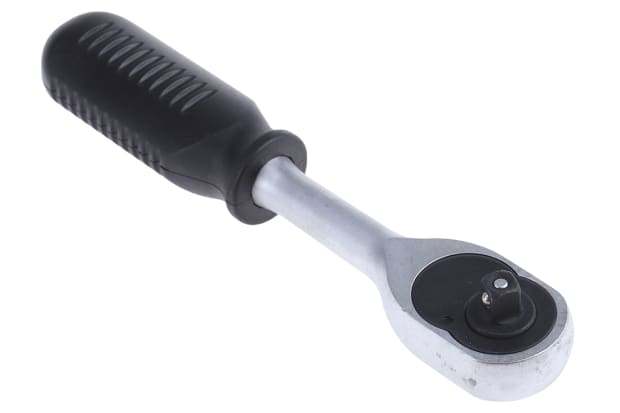
It works by allowing the user to apply torque in one direction while rotating freely in reverse. This is known as a ratchet system, and it operates using mechanical gears that lock when turned in one direction but release when moved in the other.
Socket wrenches are not the only ratchet tools available. You can also buy ratchet screwdrivers and T-handle ratchets, along with various other types of hand tools. All will take advantage of the same basic geared mechanism in one way or another.
In practice, using a ratchet drive wrench means you do not have to keep removing and replacing the tool around the nut or bolt to perform multiple rotations. It is much easier and quicker to work this way, as well as being less strenuous on the hands and wrists. It also makes it far more straightforward to work with fasteners that are in cramped, confined or difficult to reach areas.
How to Use a Socket Wrench
Knowing how to use a socket wrench is intuitive. The precise details may vary slightly from brand to brand, but the basic steps for how to use any standard ratchet wrench are as follows:
- Choose the right socket drive for the size and shape of the nut or bolt you will be fastening. Complete socket sets will frequently include a dozen or more different variants, so picking out the correct one for the task at hand is usually the trickiest part!
- It helps to know the metric or imperial size of the fastener you are working with, but if you don’t, try a couple that look about right, and figure it out by test-fitting them over the fixture. If there is any significant play, try a smaller one
- It is important not to apply heavy torque while using a drive socket that is too big for the nut or bolt. Doing so can sometimes strip it and make it incredibly difficult to remove by other means
- Once you have identified the best socket for the job, attach it to the wrench handle by sliding it over the square peg on the tool head. It will usually only fit on from one end of the socket, where you will see a corresponding square hole. The other open end of the socket will typically be hex-shaped for slotting over a nut or bolt, although square sockets are also available
- Locate the switch on the wrench head that adjusts the ratchet torque direction (clockwise or anticlockwise). Use it to select the right orientation for the tightening or loosening action you need to perform
- You are now ready to go! Place the open end of the socket drive over the fastener you are working on and use the tool just like any standard spanner. However, when you run out of space at the end of a turn, there is no need to lift the tool away. Instead, simply bring it back the other way while leaving it secured over the nut or bolt. The ratchet wrench should rotate freely in the reverse direction, allowing you to perform as many torque pushes or pulls as you need without ever having to reposition it on the fastener
Socket Wrench Sizes
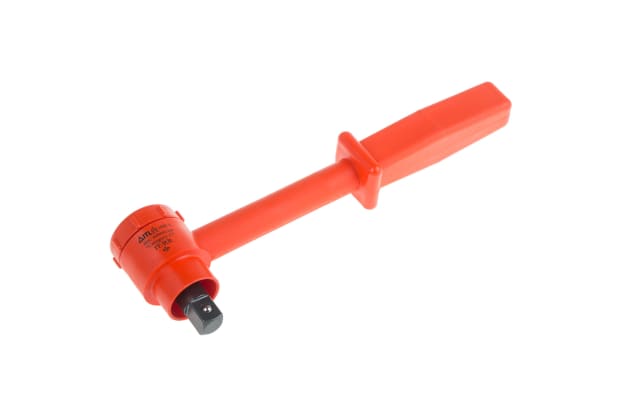
When it comes to the actual handled tool itself, there is a wide range of sizes, styles and configurations available.
Choosing the best wrench for your needs will involve consideration of various factors. Think about the types of spaces you will be working in, whether you will need access to awkward nuts and bolts, and the sorts of materials or carry weight you want to add to your tool kit. If you need a few assorted types, it is often cheaper to buy a socket wrench set featuring several differently shaped tools.
Popular searches for people buying ratchet spanners online include small, mini, half-inch (½ inch), deep or long socket wrench (again, this can often be achieved using accessories and add-ons such as extension pieces).
Note that there is a difference between looking for different socket spanner sizes or ratchet sizes, and socket drive sizes. The latter refers to the dimensions of the fasteners you will be turning.
Socket Drive Sizes
Socket drive sizes or ratchet drive sizes can look a little confusing from a distance, as there are quite a few common options to choose from. However, they are fairly easy to understand in practice, as you will almost always be dealing with standard metric or imperial nut or bolt sizes.
Note that socket drives will often be marked with two different measurements. One refers to the drive socket size (the part that attaches to the wrench head), while the other denotes the socket head size (the part that goes over a fastener). Most common drive sizes are covered by most socket drive sets.
- Drive socket sizes (the part that attaches to the ratchet head) are always given in imperial measurements (inches). Common variants include ¼”, ⅜”, ½”, ¾” and 1”
- Socket set kits include a wide variety of socket head sizes (the part that fits over/into a nut or bolt)
- Small socket sets will usually cover fastener sizes ranging from 3mm to 22mm
- Large socket sets normally include drives for nuts and bolts ranging from 19mm to 50mm in diameter
- Half-inch socket sets commonly refer to kits covering the range in between (8mm to 32mm fasteners)
It always helps to know the exact size of the nut or bolt you are working with beforehand and to match this to the markings on your socket drive set pieces. Otherwise, you can often assess and measure socket drive size visually through trial and error. Simply test-fit a couple of drives over the fastener you are working with and decide which one will best provide the required torque with the least amount of play.
